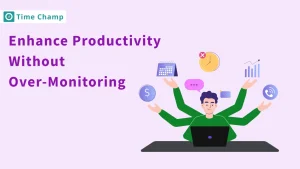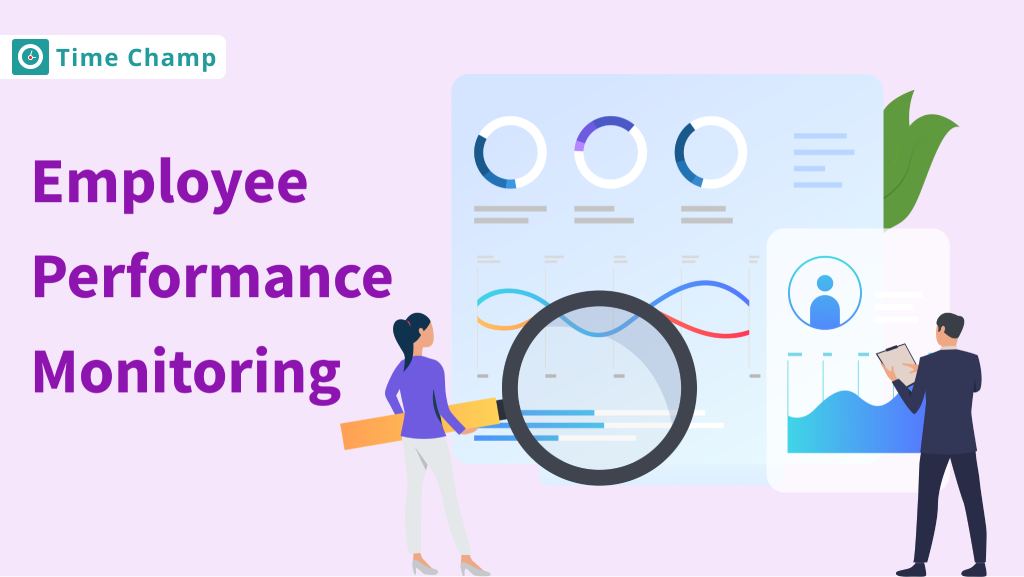The fusion of leading-edge technology like artificial intelligence (AI), machine learning, and predictive analytics is what will be the next big thing in employee monitoring software. With their unmatched degree of capabilities and insights, these cutting-edge technologies are ready to elevate employee monitoring to entirely new levels.
Understanding Employee Performance Monitoring Software
Companies are continuously seeking ways to boost productivity and improve performance management among their employees and staff in order to obtain a competitive advantage in today’s fast-paced, technology-driven workplace. staff performance management software has been a useful tool for measuring and analysing staff productivity, but new opportunities emerge as technology progresses. We’re largely on a path of uncovering the next big thing in employee performance monitoring software, which has the possibility of changing the way a company plans, manages and examines its employees’ performance.
Employee performance management software contains plenty of features that are in-built, such as Workplace analytics , project management, task management, timesheet approvals, leave management, and snapshots as well. Employers can use these technologies to track how employees spend their time on the job, which employee needs hand-holding, discover areas for improvement, and make data-driven decisions that increase productivity.
The capacity of employee performance monitoring software to give objective statistics on both individual and team performance is one of its main advantages. Employers can acquire a thorough grasp of each employee’s contributions and see any patterns or trends that might affect overall productivity by measuring metrics like activities finished, project deadlines fulfilled, or sales targets met.
Additionally, workflow inefficiencies or possible bottlenecks can be found with the aid of personnel monitoring technologies. By analysing data on task completion times or identifying recurring obstacles faced by employees, organizations can implement targeted interventions to streamline processes and optimize productivity.
It is important to note that while employee performance monitoring software offers valuable insights into workforce productivity, its implementation should be done with careful consideration for privacy concerns. Employers must ensure transparency in communicating the purpose and scope of the software’s usage while respecting employees’ rights to privacy.
The Evolution of Employee Monitoring Software: From Basic Tracking to Advanced Analytics
Employee performance management software has evolved from basic tracking systems to robust analytics platforms that offer deep insights into employee productivity. As companies set out to streamline their operations and attain higher levels of efficiency, these software solutions have played an important part in shaping performance management for staff members and analysis.
In the early stages, employee performance monitoring primarily revolved around basic tracking features. These included ‘time and attendance monitoring,‘ which allowed employers to ensure employees were present and punctual. Basic tracking software also encompassed ‘keystroke logging’ and ‘website usage monitoring,’ providing employers with a general overview of an employee’s activities throughout the workday. While these initial solutions offered some visibility into employee behaviour, they lacked the sophistication needed to analyse and interpret the data effectively.
However, as technology advanced, so did employee performance monitoring software. Many companies now have access to robust analytics solutions that provide a thorough insight into employee productivity and performance. Machine learning algorithms and artificial intelligence are incorporated into these modern technologies to process huge amounts of data and create valuable insights.
So, the evolution of employee performance monitoring software has transformed the way businesses manage and evaluate employee productivity. From basic tracking to advanced analytics, these tools provide organizations with valuable insights to optimize workforce potential, make data-driven decisions, and foster employee development. By leveraging the power of advanced analytics, businesses can enhance their performance management practices, achieve higher levels of efficiency, and stay ahead in today’s competitive landscape.
The Benefits of Implementing Employee Performance Monitoring Software in the Workplace
Time Champ software offers numerous advantages that can positively impact businesses of all sizes. From increased productivity and accountability to improved security measures and insightful analytics, the advantages of using Employee Performance Monitoring Software are undeniable. Let’s explore how this software can revolutionize the way organizations monitor and manage their employees, ultimately driving success in the modern workplace
- Real-time activity tracking and reporting: offered by employee performance monitoring software provides immediate visibility into employee activities, applications used, and time spent on different tasks. Managers can use this functionality to monitor staff performance in real-time, detect possible productivity concerns, and provide timely comments and support to enhance productivity.
- Improved Time Management and Efficiency: By offering insights into how employees allocate their time during the workday, Employee performance monitoring software improves time management and efficiency. Employees can better focus on key activities, fulfil deadlines, and allocate their time effectively when they have superior time management.
- Increased Employee Accountability and Transparency; It promotes increased employee accountability and transparency by providing a clear record of activities and behaviours within the workplace. By promoting transparency, monitoring software helps prevent unethical or non-compliant behaviour as employees are aware that their actions are being recorded and can be reviewed if necessary.
- Enhanced Security Measures for Your Business:provides enhanced security measures for businesses by monitoring and detecting potential security threats and breaches. Monitoring software also assists in identifying vulnerabilities in the system, enabling businesses to proactively address them and strengthen their security infrastructure. Trends Shaping the Future of Employee Performance.
Also Read: Pros and Cons of Employee Monitoring
Trends Shaping the Future of Employee Performance Monitoring Software
Real-Time Monitoring and Feedback: The future of employee performance monitoring software will emphasize real-time monitoring and feedback. Traditional annual or quarterly evaluations will be replaced by continuous monitoring, providing managers with instant visibility into employee performance and enabling timely feedback and coaching.
Data Analytics and Predictive Insights: The future of performance monitoring software will be shaped by developments in data analytics and artificial intelligence. organization will be able to analyse massive amounts of data and produce predicted insights thanks to these technologies. Algorithms based on machine learning will find patterns, trends, and projected performance gaps to make it possible for managers to make data-driven decisions.
In fact, leveraging AI Prompt tools can further enhance the efficiency of these systems, enabling more accurate and customized data analysis for better workforce management. These prompts provide an innovative approach to generating real-time insights and actionable recommendations.
Put an emphasis on employee engagement and well-being: Employee engagement and well-being are crucial performance determinants. Future software solutions will include tools for measuring and improving employee engagement, job satisfaction, and general well-being. This trend emphasizes the significance of fostering a healthy work environment that fosters employee growth and achievement.
Integration with Collaborative Tools and Platforms: Employee performance is closely tied to collaboration and teamwork. Performance monitoring software will integrate with collaborative tools and platforms, allowing organizations to track team activities, monitor project progress, and assess collaborative performance. This integration will provide a holistic view of performance and facilitate effective teamwork.
Mobile and Remote Work Monitoring: With the rise of remote work and mobile technologies, the performance monitoring software will adapt to cater to these environments. Mobile apps and remote monitoring features will enable organizations to track performance regardless of the location or device used by employees. This trend supports the flexibility and agility required in modern work arrangements.
Ethical Considerations and Data Privacy: As employee monitoring becomes more sophisticated, ethical considerations and data privacy will gain prominence. Future software solutions will prioritize employee privacy, comply with data protection regulations, and establish transparent policies for data collection, storage, and usage. Organizations will need to strike a balance between monitoring performance and respecting employee privacy rights.
Integration with Learning and Development: Performance monitoring software will integrate with learning and development platforms, bridging the gap between performance evaluation and employee growth. This integration will allow for personalized training recommendations, identification of skill gaps, and alignment of performance goals with learning initiatives. It will promote continuous learning and development as an integral part of performance improvement.
The future of employee performance monitoring software will be shaped by real-time monitoring and feedback, data analytics and predictive insights, a focus on employee engagement and well-being, integration with collaborative tools, mobile and remote work monitoring, ethical considerations, and integration with learning and development. By embracing these trends, organizations can enhance performance management practices, optimize employee productivity, and foster a positive work culture that drives success.
The Ethical Considerations Surrounding Employee Monitoring Software Usage
Employee performance monitoring software is becoming more common in today’s workplaces, giving organisations valuable insights into employee productivity, behaviour and performance. However, the widespread use of such software creates serious ethical concerns that must be handled carefully in order to strike a balance between monitoring and preserving employee privacy and rights.
Transparency and Consent: Organisations must ensure transparency and seek informed consent from employees before using performance monitoring tools. Before implementing performance monitoring tools, organisations must establish transparency and obtain informed consent from employees. Building trust and keeping a positive work environment require clear communication on the aim, scope, and level of monitoring. Employees should be aware of the data being gathered, how it will be used, and how it may affect their privacy
Proportional Monitoring: Employers should implement monitoring practices that are proportionate to the intended purpose and objectives. Excessive monitoring that invades employee privacy or goes beyond what is necessary can lead to resentment, decreased morale, and negative work culture. It is important to strike a balance between monitoring for legitimate business purposes and respecting employee autonomy.
Purpose Limitation and Data Minimization: Employee monitoring should be guided by the principle of purpose limitation and data minimization. Organizations should only collect and analyse data that is directly relevant to performance evaluation and improvement. Unnecessary or excessive data collection can infringe on employee privacy and raise concerns about potential misuse
Employee Well-being and Psychological Impact: The use of employee monitoring software can have psychological effects on employees. Continuous monitoring and scrutiny may lead to increased stress, anxiety, and a sense of constant surveillance. Organizations should prioritize employee well-being and consider the potential psychological impact of monitoring, providing adequate support and resources as needed.
Regular Evaluation and Review: Ethical considerations surrounding performance monitoring software should be an ongoing focus for organizations. Regular evaluation and review of monitoring practices and their impact on employee privacy and rights are necessary. Feedback from employees should be actively.
In Conclusion
An exploration into the next big thing in employee monitoring software reveals its potential to revolutionize how organizations track and manage their workforce. By leveraging advanced analytics and incorporating emerging technologies like AI, this new generation of software offers benefits such as improved productivity, employee engagement, and data-driven decision-making. However, it is crucial for organizations to consider ethical considerations and choose the right software that aligns with their unique needs and values.







